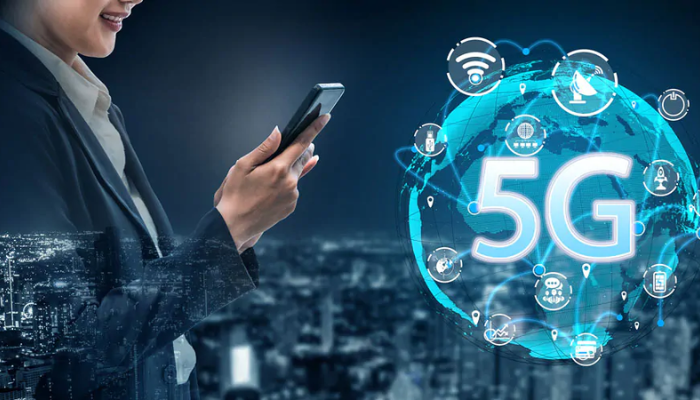How 5G Will Transform the Internet of Things? (IoT)
- April 10, 2025
- 0
The world is changing quickly as a result of new technologies that are changing how we live and engage with the world. The Internet of Things (IoT) and
The world is changing quickly as a result of new technologies that are changing how we live and engage with the world. The Internet of Things (IoT) and

The world is changing quickly as a result of new technologies that are changing how we live and engage with the world. The Internet of Things (IoT) and 5G are two of the most revolutionary of these ground-breaking developments. When combined, they have the power to significantly improve device communication, making the world more intelligent, effective, and linked.
5G networks have enormous potential to revolutionize the Internet of Things (IoT) once they are deployed globally. Here are some examples of how 5G will improve IoT applications and usher in a new era of connection.
Ultra-low latency, or the time it takes for data to move between devices, is one of 5G’s biggest advantages over its predecessors. 5G cuts latency to an incredible 1 millisecond or less, whereas 4G latency might be anywhere between 30 and 50 milliseconds. For real-time Internet of Things applications, this latency reduction is revolutionary.
For example, 5G’s ability to facilitate fast communication would be extremely helpful for driverless cars, which must make snap decisions. 5G’s reduced latency will allow for nearly instantaneous data transfer when a vehicle’s various sensors need to interface with one another and external devices, improving safety and facilitating smoother navigation.
In a similar vein, real-time updates will be advantageous for intelligent healthcare applications like patient monitoring systems or remote surgery, where any delay could be expensive.
A greater density of linked devices than ever before will be supported by 5G networks. 5G can support up to 1 million devices in a single square kilometer, whereas 4G could support roughly 100,000 devices. The vast IoT ecosystem, which is expected to include billions of connected devices by the end of the decade, depends on this capacity development.
5G will enable effective, scalable IoT networks in sectors like manufacturing, logistics, and agriculture where thousands of devices and sensors must work together. 5G will link a range of sensors and gadgets in smart cities for everything from energy monitoring to traffic control, promoting sustainable and intelligent urban growth.
Another area where 5G surpasses its predecessors is in data transmission speed. IoT devices will be able to send massive volumes of data fast and reliably thanks to 5G, which might have data speeds as high as 20 Gbps. For Internet of Things applications involving high-resolution imagery, video streaming, or intensive data processing, this is especially crucial.
For instance, 5G’s high-speed data transfer capabilities will be advantageous for smart security systems in homes or cities that depend on real-time video feeds from cameras. Real-time streaming and analysis of surveillance material greatly enhances security protocols.
The battery life of IoT devices will be significantly impacted by 5G’s increased power efficiency. IoT devices that use wireless connectivity will use less energy and have longer battery life thanks to increased power efficiency. This is particularly crucial for gadgets placed in hard-to-reach places or remote locations, such smart meters in rural areas, agricultural drones, and environmental sensors.
IoT devices may operate for extended periods of time without requiring frequent maintenance or recharging by utilizing 5G’s energy-efficient protocols, which will ultimately make them more useful and economical.
Network slicing, one of 5G’s most sophisticated capabilities, enables the formation of several virtual networks inside a single 5G physical network. This implies that particular network resources can be assigned to IoT devices according to their needs. For instance, a smart household appliance may require less bandwidth but more consistent connectivity, but a smart healthcare equipment may require ultra-reliable, low-latency communication.
With the help of this capacity, the network may be used more effectively, guaranteeing that vital Internet of Things applications—such as driverless cars or medical devices—get the high-priority resources they require free from interruption from less crucial traffic. Network slicing will increase the flexibility, scalability, and customization of IoT applications by dynamically allocating network resources.
A more connected and efficient society will result from the confluence of 5G and IoT. Which will open up new levels of connectivity, speed, and dependability. 5G’s influence on the Internet of Things will revolutionize everything from industry and healthcare to smart cities and driverless cars. 5G is expected to propel the IoT ecosystem to new heights by facilitating smooth real-time communication, extensive device connectivity, and improved security. This will pave the way for cutting-edge applications that will transform industries and enrich people’s lives everywhere.
Businesses and consumers alike will profit from the previously unheard-of opportunities presented by 5G networks as they develop and grow. IoT has a promising future, and 5G will play a key role in that development.
Also Read: How SaaS Is Changing The Way We Work?
5G is currently being rolled out in many countries around the world. But its availability will vary depending on regional infrastructure and regulatory factors. While some countries have already launched 5G networks, others are still in the process of building the necessary infrastructure. Over time, as 5G networks expand, global IoT applications will be more widely supported.
5G will provide the high-speed, low-latency connectivity needed for various IoT applications in smart cities. This includes everything from connected traffic lights and surveillance cameras to smart waste management and energy-efficient buildings. With 5G, cities will be able to collect and analyze data in real time to optimize services, improve sustainability, and enhance quality of life.
Yes, 5G offers enhanced security features compared to previous generations. These include stronger encryption, more robust authentication protocols, and better overall network protection. As IoT devices become more interconnected, these security improvements will be crucial in protecting sensitive data, especially in sectors like healthcare, finance, and public services.